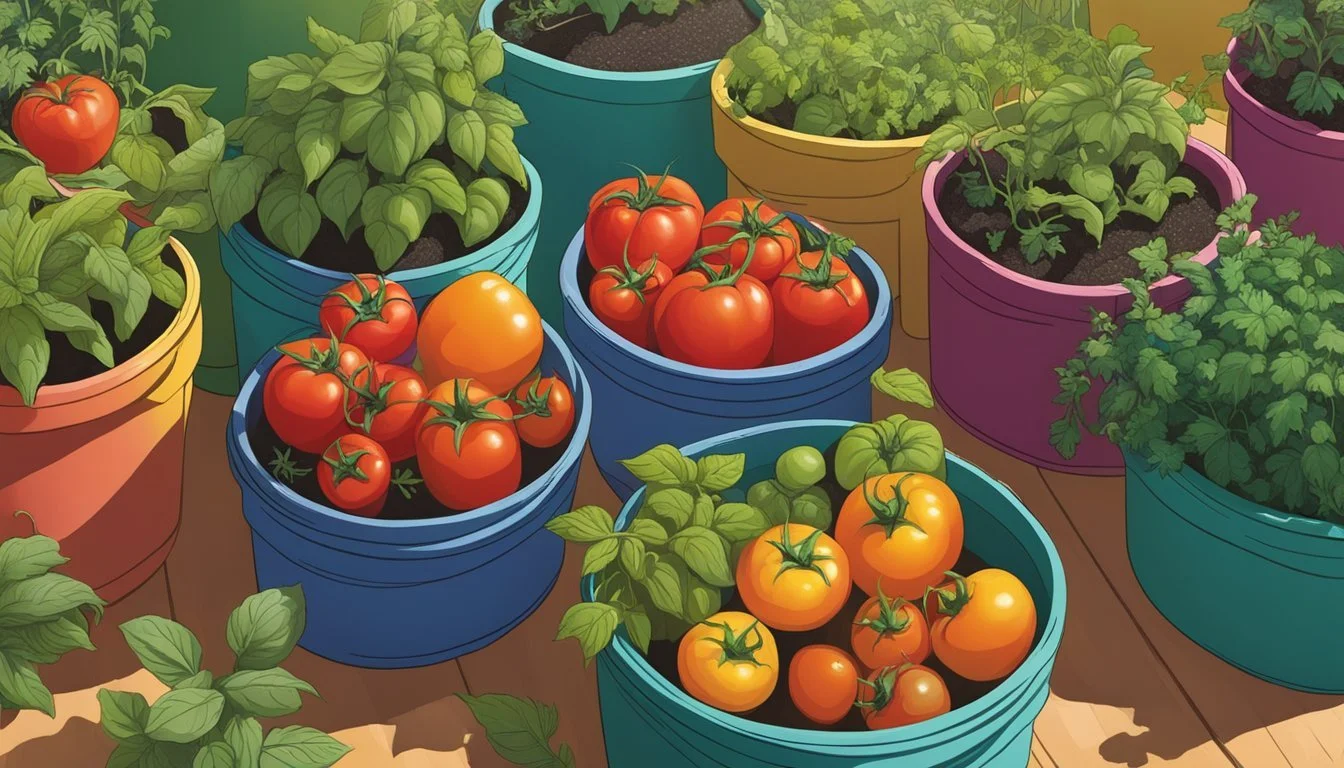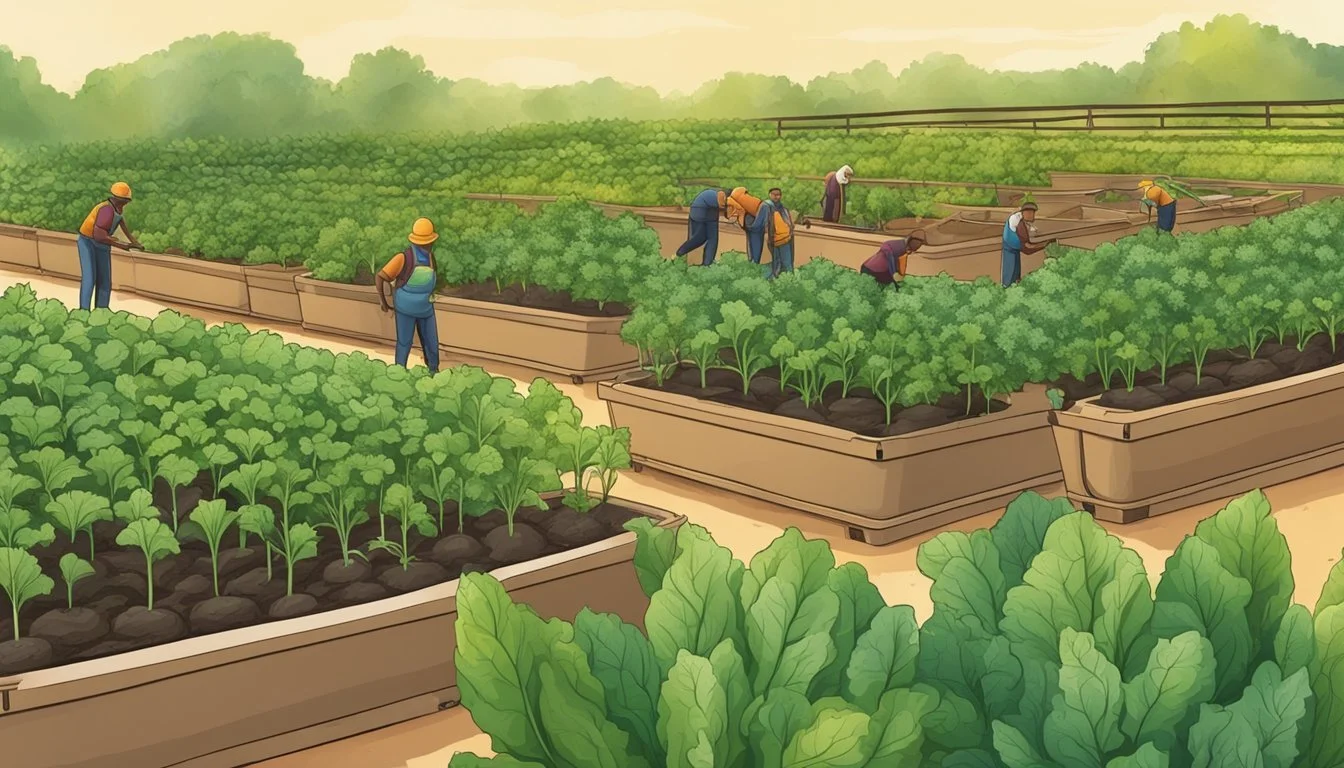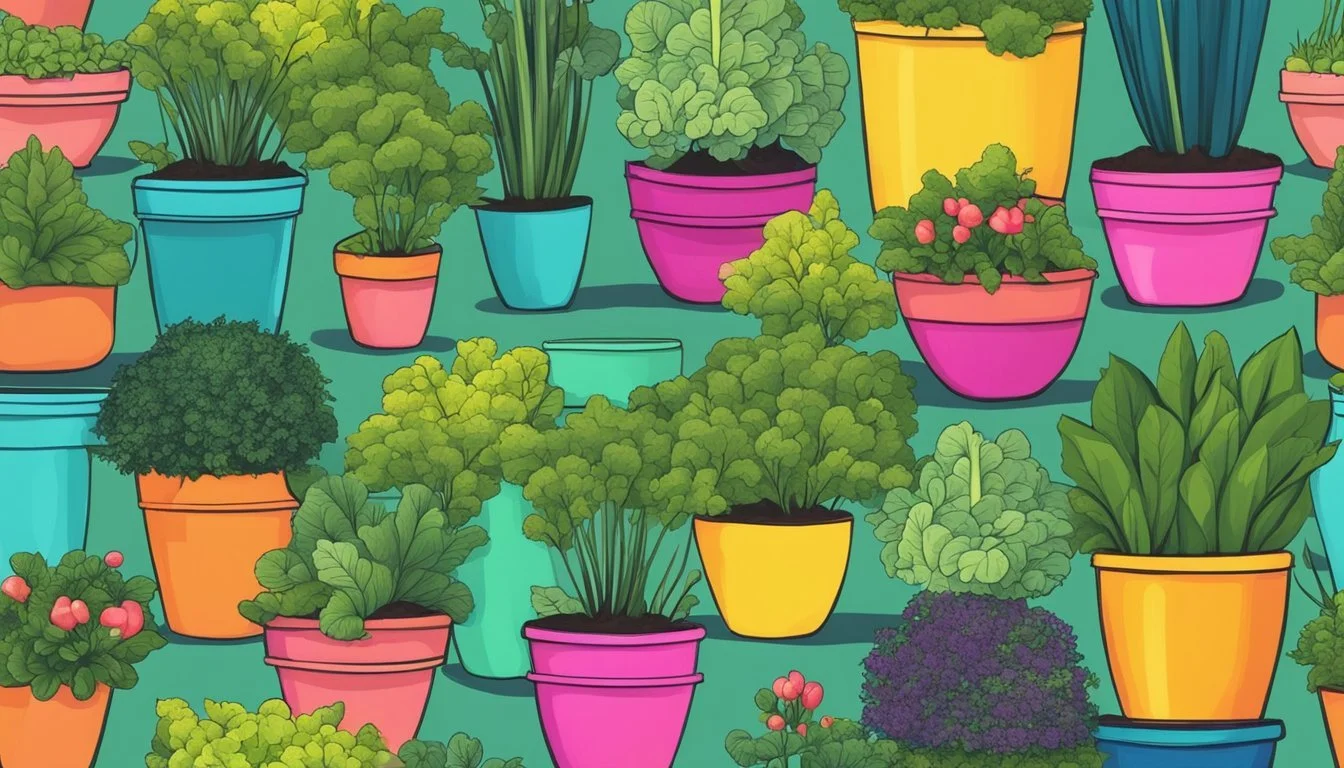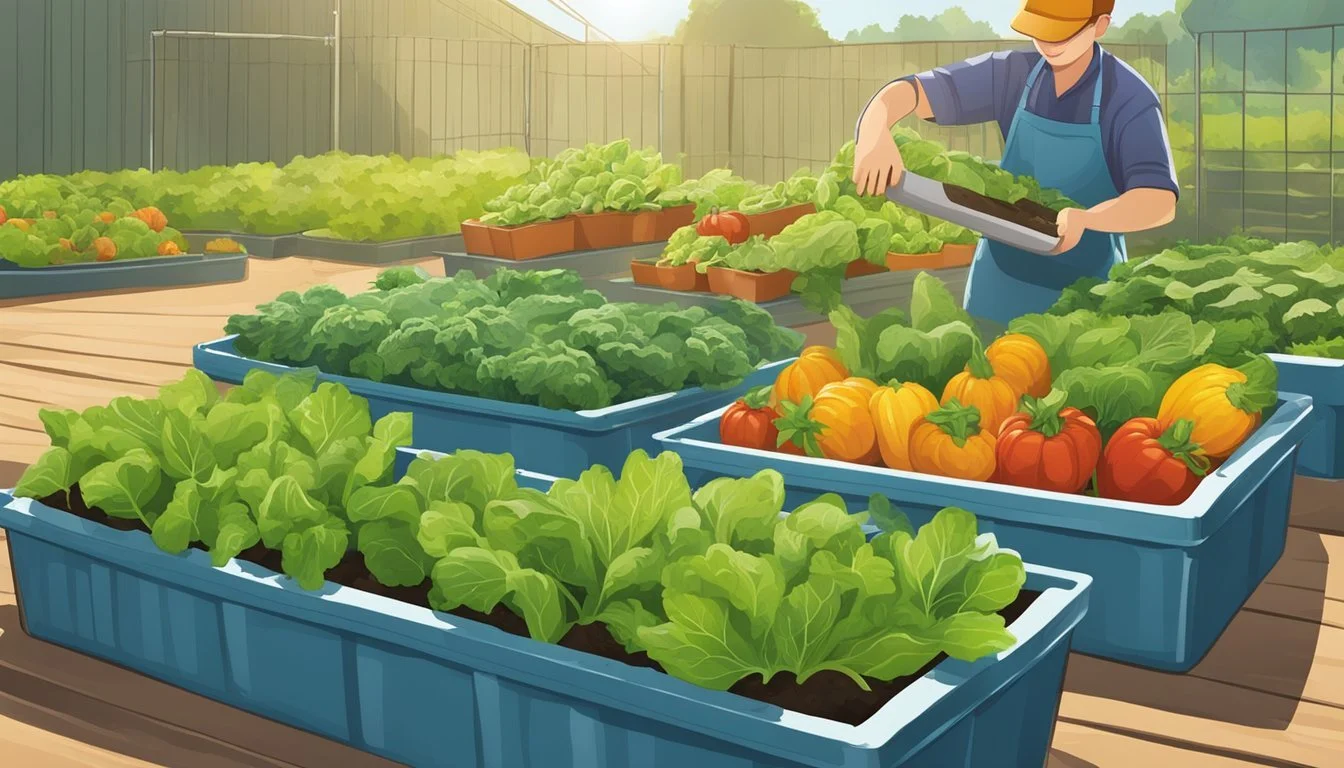Vegetables to Grow in Containers
Best Picks for Small-Space Gardening
Container gardening offers a practical solution for individuals with limited outdoor space who still wish to indulge in the pleasures of homegrown vegetables. The adaptability of containers allows them to be placed on balconies, patios, and even windowsills, making vegetable gardening accessible to city dwellers and those without traditional garden plots. Many vegetables thrive in containers, given the right conditions, and can yield bountiful harvests similar to those from ground plots.
Essential to container vegetable gardening is selecting the right types of vegetables that are known to perform well in confined spaces. Compact plants such as tomatoes, peppers, lettuce, and radishes are excellent choices, as they require less room to grow and have root systems that adapt well to the depth of typical containers. By utilizing pots, gardeners can control soil quality, overcome poor local soil conditions, and mitigate the risk of soil-borne diseases which can be particularly advantageous for more sensitive crops.
Careful consideration of container size, soil composition, and watering needs forms the backbone of successful container vegetable gardening. Larger vegetables like tomatoes and squash need more space and deeper pots for their roots, while herbs and lettuce can flourish in smaller, shallower containers. With an understanding of these factors, even novices can embark on a container gardening journey, producing healthy, homegrown vegetables regardless of their living situation.
Choosing the Right Containers
Selecting appropriate containers is fundamental for a thriving container garden. Whether it is a little container garden or a large one drainage is key. Getting the size, material and placement are the first criteria to consider with container gardening for beginners.
Sizing Your Containers
Proper sizing of containers is essential. A container that is too small can restrict root growth and reduce access to nutrients and moisture, stunting plant development. Conversely, excessively large containers may lead to soil staying wet for too long, potentially causing root rot. As a guideline:
Small vegetables like herbs and lettuce thrive in pots with a 6-inch diameter.
Medium-sized plants such as peppers require pots with a diameter of at least 12 inches.
Large vegetables like tomatoes are best suited to pots with a diameter of 18 inches or more.
It's also important to consider the depth of the container, as some plants have deep root systems and require more space to expand.
Material Considerations
Container materials can affect both the plants and the ease of gardening:
Clay pots are porous and allow roots to breathe, but they can dry out quickly.
Plastic planters are lightweight and retain moisture well, but may not be as durable.
Wooden containers provide good insulation from heat and cold but can decay over time.
Fabric pots offer excellent aeration and are easily portable; however, they may necessitate more frequent watering due to increased evaporation.
Consider the climate and the amount of maintenance you can provide when choosing the material for your container garden.
Importance of Drainage Holes
Drainage is a non-negotiable feature in container gardening to prevent waterlogging and ensure plant health. Containers must have ample drainage holes at the bottom to allow excess water to escape. If a chosen pot doesn't have holes, they can often be drilled in manually, except in the case of ceramic or glass which may crack. Adding a layer of gravel or small stones at the bottom of pots without holes can improve water management, although it's not a substitute for proper drainage holes.
Best Vegetables for Container Gardening For Beginners
Growing vegetables in container gardening systems requires a little thought. With less room for root systems, it's crucial to choose varieties known for adapting well to confined spaces and ensure they receive the proper amount of sunlight and water.
Larger plants might require a container all of their own, or you might need to think about self-contained raised beds with a good depth for plant roots.
Root vegetables can thrive well in large containers, but require adequate drainage holes and need to be located correctly as they will be hard to move.
Taller plants can grow if provided the support they need, but you might want to consider bush varieties of vining and trailing plants, pulses, and legumes.
Small plants can be planted in window boxes or unglazed clay pots
Tomatoes
Tomatoes are a classic choice of vegetable plants for container gardening due to their vertical growth and high yield. They require ample sunlight, typically six to eight hours per day, and consistent watering. For best results, one should opt for determinate or bush tomatoes which tend to grow to a certain size and produce a crop all at once.
Leafy Greens
Leafy greens and shallow-rooted plants like leaf lettuce spinach and other salad greens thrive in shallow containers with the right growing medium and can tolerate partial shade, making them perfect for window boxes on balconies or patios with limited sunlight. They require moist soil to make sure the seeds sprout and can be harvested frequently, offering a continuous supply of fresh leaves in just a few containers.
Root Vegetables
Carrots and radishes are productive root vegetables for containers. They need deeper pots with loose, well-draining soil.
Beets and green onions can also prosper in pots, provided they're thinned out adequately to prevent overcrowding.
For all root vegetables, consistent soil moisture is fundamental to develop tender, flavorful roots.
Pepper Plants and Eggplants
Both peppers and eggplants are well-suited for containers, preferring warm conditions and full sun. They need regular feeding and even moisture to produce bountiful fruit. Containers should be deep enough to accommodate their root systems and support their stalks as they grow.
Legumes
Legumes like peas and green beans are excellent for container growing due to their compact size and climbing nature, which can be supported with trellises or stakes. They enrich the soil with nitrogen, which benefits other plants in a mixed container setup. Bush beans are an obvious choice for a container vegetable garden, with their smaller stature.
Cucurbits
Cucurbits, including cucumbers, require larger vegetable garden containers to accommodate their sprawling growth. Providing support with trellises can help manage their size while ensuring proper air circulation and access to sunlight. Regular watering to keep the soil evenly moist is crucial, as cucurbits are particularly sensitive to drought.
Soil and Potting Mix Essentials
Selecting the appropriate soil or potting mix and managing nutrition is critical for keeping plants healthy and the productivity of vegetables grown in containers. It ensures robust root development and provides the essential nutrients for vigorous plant growth.
Choosing the Right Mix for Container Gardening
The ideal potting mix for container vegetables is soilless, lightweight and well-aerated to promote root health. It usually consists of a combination of peat moss, vermiculite, and perlite. These components help to maintain the necessary balance of moisture and air. Organic matter, such as compost or worm castings, can also be included to infuse the mix with nutrients. The mix must drain well to prevent root rot while retaining enough moisture to keep the plant hydrated.
Fertilization and Nutrient Management
Vegetables in containers rely heavily on their potting mix for their nutritional needs. A controlled-release fertilizer can provide a steady supply of nutrients over time. Alternatively, regular applications of a balanced, liquid fertilizer from your local garden center can meet the crop's demands.
Key Nutrients:
Nitrogen (N): Vital for leaf growth.
Phosphorus (P): Important for root development.
Potassium (K): Crucial for flower and fruit production.
Using an organic potting mix rich in compost can initially supply these essential nutrients. However, container vegetables often require supplemental feeding, particularly if they are in long-term production. Always follow the fertilizer's instructions for proper dosage and frequency to avoid overfeeding, which can harm plants and disrupt soil ecosystems.
Watering Your Container Vegetables
Proper watering is essential for the success of container-grown vegetables. Containers dry out faster and require more frequent watering than plants in the ground. Mastery of watering techniques and monitoring moisture levels are crucial to maintaining healthy, productive plants.
Watering Techniques
For container vegetables, consistent watering ensures that plants have the necessary moisture to absorb nutrients and thrive. One should use a watering can or hose with a shower nozzle to distribute water evenly over the soil, avoiding the leaves to minimize the risk of disease. Water should be applied until it starts draining from the bottom of the container, ensuring that the entire root ball has been moistened.
Here are the standard techniques:
Morning Watering: Watering in the early hours allows plants to utilize the moisture throughout the day and reduces evaporation.
Deep Watering: Thoroughly soaking the soil promotes deeper root growth and can lead to more robust plants.
Self-watering Containers: These can be beneficial by providing a consistent water supply via a reservoir.
Monitoring Moisture Levels
Checking the soil moisture can guide gardeners on when to water:
Moisture Meters: A tool that gives an immediate reading of soil moisture levels can prevent over- or under-watering.
Manual Check: One can assess the soil's moisture by feeling the soil about an inch below the surface; if it's dry, it's time to water.
Soil Condition Action to Take Dry Water thoroughly Moist Wait before watering Wet Check again later
Gardeners should ensure that containers have adequate drainage to prevent waterlogging, which can lead to root rot. The use of a potting mix designed for container growing can help manage drainage and moisture retention.
Maximizing Sunlight and Temperature
To achieve a bountiful container vegetable garden, gardeners must prioritize optimal sun exposure and temperature management, as these factors are critical for plant growth and fruiting.
Understanding Sun Exposure
For vegetable plants grown in containers, full sun refers to an area receiving at least six hours of direct sunlight daily. This level of sun exposure is necessary for fruiting vegetables, such as tomatoes, peppers, and eggplants, which all thrive when basked in generous sunlight. In contrast, leafy greens like lettuce and spinach can prosper with less sun, requiring only 3 to 5 hours of sunlight per day. Gardeners must observe the patterns of sunlight over their intended growing area, considering various factors:
Southern and western exposures: These areas receive the most intense sunlight and warmth.
Northern and eastern exposures: Locations with these exposures are typically cooler and shadier.
USDA Hardiness Zones: Understanding the zone where one garden can inform their expectations for sun exposure and temperature ranges throughout the seasons.
Managing Seasonal Changes
Seasonal shifts notably affect both temperature and sun exposure:
Fall and Winter: Reduced intensity and duration of sunlight require gardeners to place their containers in locations that maximize the available light. Additionally, these seasons often demand strategic positioning of containers to shield plants from extreme cold.
Full Sun to Partial Shade: Transitioning from the full sun of the summer to the partial shade of the fall can require the relocation of container plants to maintain adequate sunlight levels. Gardeners should track the sun's movement to adjust placement accordingly.
By carefully managing these elements, one can ensure their container vegetable garden receives the light and warmth needed to develop healthily throughout the year.
Support Structures for Climbing Container Plants
Vegetable container gardening can be space-efficient and productive, particularly when gardeners leverage vertical space with the right support structures. Climbing plants like pole beans benefit greatly from sturdy supports that facilitate upward growth.
Trellises and Cages
A trellis is an essential structure for providing support to climbing container vegetable garden plants such as pole beans. The materials used for trellises vary, ranging from traditional wooden lattice to durable metal wire frameworks. For a simple and effective trellis, in a container garden, one can use:
Bamboo stakes
Garden twine for creating 4-inch grids
Metal garden trellises for a long-lasting solution
Cages offer a more encompassing structure, ensuring plenty of room to grow vegetables vertically and horizontally while maintaining stability. Metal cages, with circular or square designs, are a popular choice.
Using Vertical Space Wisely
Maximizing vertical space is critical for successful container gardening. Gardeners should consider the following when utilizing vertical space:
Sunlight exposure: Position trellises to ensure plants receive adequate sunlight without overshadowing other plants.
Accessibility: Arrange climbing structures so that all parts of the plant remain accessible for maintenance and harvesting.
Stability: Secure trellises and cages firmly to withstand the weight of mature plants and environmental factors like wind.
By selecting appropriate support structures and strategically using vertical space, climbers like pole beans will not only thrive but also contribute aesthetically to the garden.
Seasonal Planting and Harvesting Container Gardens
Successful container vegetable gardening requires understanding when to plant and when to harvest. One must choose the right crops for the season to ensure a productive garden throughout the year.
Best Vegetables for Spring and Summer
In spring and summer, gardeners should focus on planting vegetables that thrive in warmer temperatures. Tomatoes, peppers, leafy crops, and summer squash are ideal for this season, benefiting from the long days and intense sunlight. These crops typically require:
Full sun exposure, ideally 6 or more hours per day
Regular watering to maintain consistent soil moisture
Harvesting these crops in a vegetable container garden usually begins in mid-summer and can continue until the first frost, depending on the plant's specific growth cycle and variety.
Fall and Winter Container Crops
For fall and winter, the best vegetables are cool-season crops that can tolerate or even prefer the colder weather. Vegetables like lettuce, spinach, and winter squash are suited for shorter days and cooler temperatures. These plants generally require:
Sunlight exposure ranging from 3 to 5 hours per day
Less frequent watering compared to their summer counterparts
Harvest for these crops may start in early fall and can sometimes extend into the winter months if provided with some protection against frost.
Succession Planting
Succession planting maximizes the use of space in a container garden and ensures a continuous supply of vegetables. By staggering the planting of crops every 2 to 3 weeks, gardeners can enjoy a continuous harvest. This technique is particularly effective with fast-growing vegetables such as lettuce and spinach. It's important to note:
Succession planting can be applied within both the warm and cool seasons
It requires planning to ensure that the timing aligns with the crop's specific growing cycle
One can enjoy fresh produce throughout the growing season by implementing a rotation system based on the vegetables' unique growth timelines, making the most of limited yard space.
Vegetable Container Gardening Pest Management
Growing vegetables in containers can help mitigate some garden pests but for efficient pest management in container vegetable gardening understanding pest behaviors and using effective organic control strategies is necessary to promote healthy plants.
Identifying Common Pests
Pests can vary widely depending on the crop, but there are a few common culprits that frequently target container gardens. Gardeners should be vigilant for:
Aphids: Small, sap-sucking insects that can cause leaf curling and stunted growth.
Spider Mites: Tiny spiders that create fine webs on plants and can cause yellowing or speckled leaves.
Whiteflies: Small, winged insects that cluster underneath leaves, leading to wilting and leaf yellowing.
Caterpillars: The larvae of butterflies and moths, which can chew large holes in leaves.
Regular inspection of plants, paying close attention to the undersides of leaves and around stems, will help in early detection and more effective control.
Organic Control Methods
To manage pests organically, gardeners can adopt these methods:
Physical Removal: Manually removing pests like caterpillars or egg clusters.
Water Sprays: Dislodging aphids and mites with a strong jet of water.
Insecticidal Soaps: Using a dilute soap solution can effectively control many soft-bodied insects.
Neem Oil: An organic oil that acts as a pest repellent, as well as a fungicide and miticide.
Creating a habitat for beneficial insects, such as ladybugs and lacewings, which prey on harmful pests, is also an effective organic method to control pest populations. Monitoring the garden regularly allows for early identification of issues and timely application of these organic methods to prevent extensive damage.
Container Garden Aesthetics
Aesthetic considerations of a container garden enhance its appeal and integrate functionality with visual pleasure. Proper layout and the incorporation of edible flowers and herbs are crucial in achieving a beautiful yet productive garden space.
When designing a container garden layout, gardeners should consider the available space, whether it’s a patio, balcony, or backyard. Containers should be placed to maximize sunlight exposure, while also allowing for easy access for maintenance and harvest. For small spaces, vertical arrangements or window boxes can be an efficient use of space. Hanging baskets can also add levels and depth, providing a lush and layered look.
Maximize Sunlight: Arrange containers in a pattern that allows all plants access to sunlight.
Ease of Access: Ensure there's enough room between containers for watering and tending.
Vertical Gardening: Use stackable pots, trellises, or shelves.
Hanging Baskets: Include cascading vegetables and flowers for visual appeal.
Advanced Tips for Container Gardeners
Container gardening can elevate one’s gardening experience by utilizing advanced techniques like selecting hybrid varieties and deploying well-designed strategies for space optimization.
Hybrid vegetables are often bred for their ability to flourish in confined spaces, including containers. Gardeners may seek out dwarf varieties that maintain a smaller stature while still providing ample produce. Such varieties are genetically predisposed to thrive in pots or grow boxes, making them ideal for balconies and patios. Grafting is another sophisticated approach wherein one plant's root system is combined with another plant's top growth to combat soil-borne diseases and improve yields. This is particularly useful in container gardening, where potting soil depth and volume are limited.
Microgreens are the seedlings of vegetables and herbs and a smart choice for gardeners looking to make the most of their limited space. Not only do they require minimal room and grow quickly, but they are also a powerhouse of nutrients. Gardeners can harvest them just after the first true leaves develop. Additionally, space-saving varieties can be cultivated through the use of vertical gardening techniques or employing tiered planters to maximize vertical space.
For example, lettuces and spinach can be grown in shallow trays or pots, maximized in a tiered setup, thus conserving space while still providing a bountiful harvest.
Compact, bush-type cucumber or bean plants are excellent for vertical growth and can be trained up a trellis or support system to enhance air circulation and sunlight exposure.
By concentrating on specifically adapted plant varieties and innovative cultivation methods, container gardeners can defy space limitations and successfully harvest a wide array of vegetables.
Post-Harvest Care and Preservation
Once the vegetables are harvested from their container gardens, proper care and preservation are essential to maintain their freshness and nutrients. The methods employed will depend on the type of vegetable and the intended use.
Storing and Preserving Your Harvest
Fresh vegetables from a container vegetable garden can be stored using various methods to retain their quality. Freezing is an effective method for many types of produce and helps in retaining nutritional value. Most vegetables should be blanched before freezing to preserve color, flavor, and texture. Drying is another preservation method, suitable for items like herbs, tomatoes, and peppers, which involves dehydrating the produce at low temperatures.
For Freezing:
Blanch vegetables for 2-3 minutes.
Plunge them into ice water to stop the cooking process.
Dry thoroughly before freezing.
For Drying:
Wash and slice vegetables into even pieces.
Spread them on a drying rack in a well-ventilated, shaded area.
Store in air-tight containers once completely dry.
Preparing for the Next Growing Season
After the harvest, container gardeners should clean and refurbish their containers to prepare to grow vegetables in the following growing season. They should remove any residual plant matter and refresh the potting soil mix if necessary. Adding compost or a balanced fertilizer can replenish nutrients that were depleted during the growing season.
Soil Refreshment:
Remove old potted plants and roots.
Mix in compost or a balanced slow-release fertilizer.
Ensure soil is free-draining and nutrient-dense for the next crop.
By taking diligent steps for post-harvest care and preparing for the future, gardeners can grow fresh veggies in a container vegetable garden year-round.







